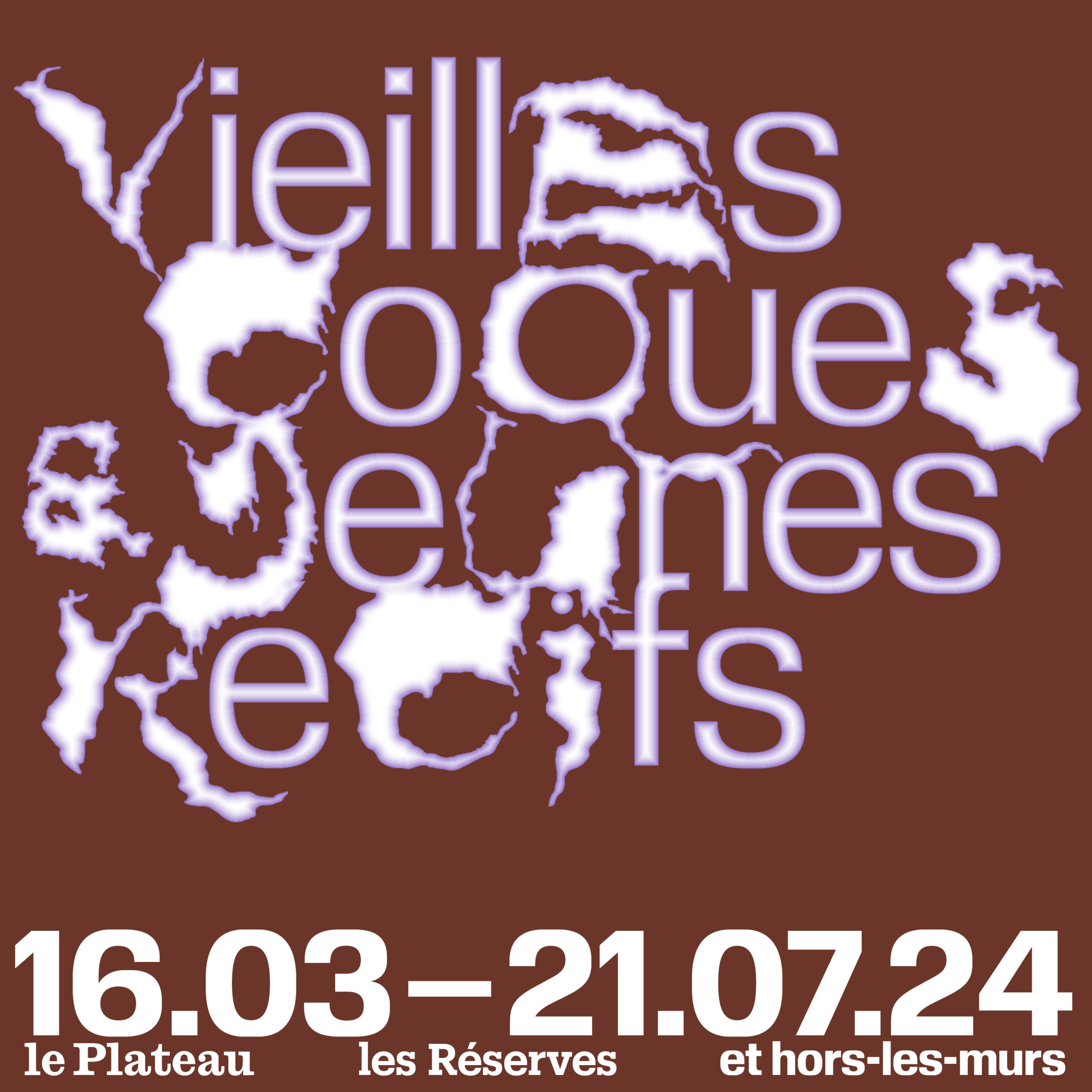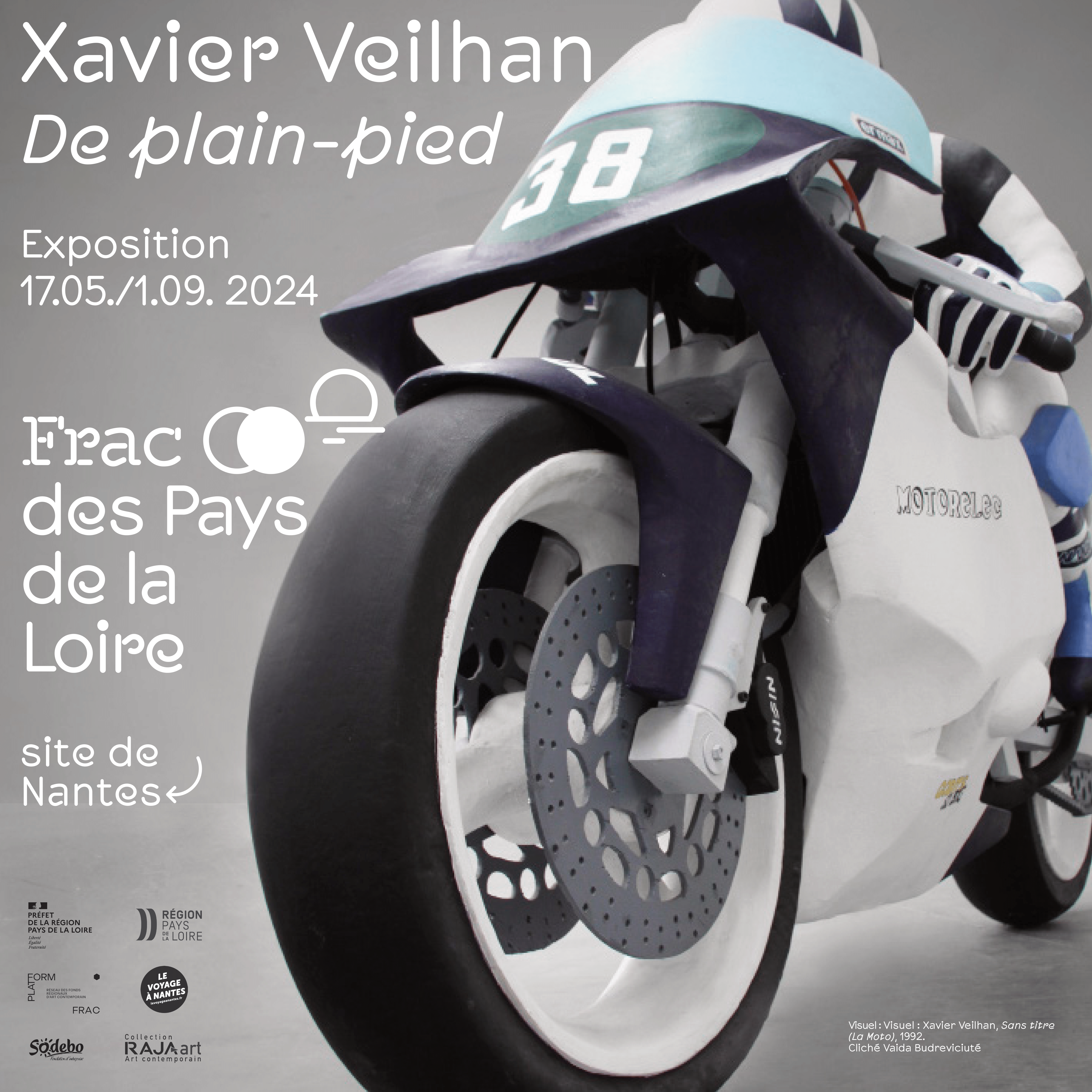Toucher l’insensé

‘Toucher l’insensé’ at the Palais de Tokyo
(and other recent artistic experiments in institutional psychiatry)
16 February — 30 June 2024
Carla ADRA, Astéréotypie, Agathe BOULANGER, Centre Familial de Jeunes, Michel FRANÇOIS, Signe FREDERIKSEN, Dora GARCíA, Generativ Process, Tania GHEERBRANT, Jules LAGRANGE, Boris LEHMAN & Club Antonin Artaud, François PAIN, Patrik PION, Abdeslam ZIOU ZIOU & Sofiane BYARI
The exhibition ‘Toucher l’insensé’ (curated by François Piron) at the Palais de Tokyo closed its doors at the start of the summer. But we’re choosing to re-read it, to look at it again, because it’s part of a wider reflection on the Palais de Tokyo as a whole. A project called ‘Le Grand Désenvoûtement’ (cur. Adélaïde Blanc) has been running there since 2022, in several chapters and in the form of an analysis, in other words both in the sense of a cure and a radical critique of the institution.
‘Toucher l’insensé’ is also part of a wider constellation of projects, which are variations on and challenges to modes of exposure, and which are based on historical figures in institutional psychiatry. We are thinking here in particular of the very recent exhibitions focusing on Fernand Deligny (‘Légendes du radeau’, Crac Occitanie, Sète, 2023) and François Tosquelles (‘La Déconniatrie’, Les Abattoirs, Toulouse, 2022; preceded by an international research programme conducted since 2018¹), accompanied by a major documentary, archival, editorial and scientific dimension.
In each case, the aim is to ask how we can inherit the legacy of institutional psychiatry today. How can we question and weave new relationships between the notions of collective, art, exile, therapy and critique of the institution?
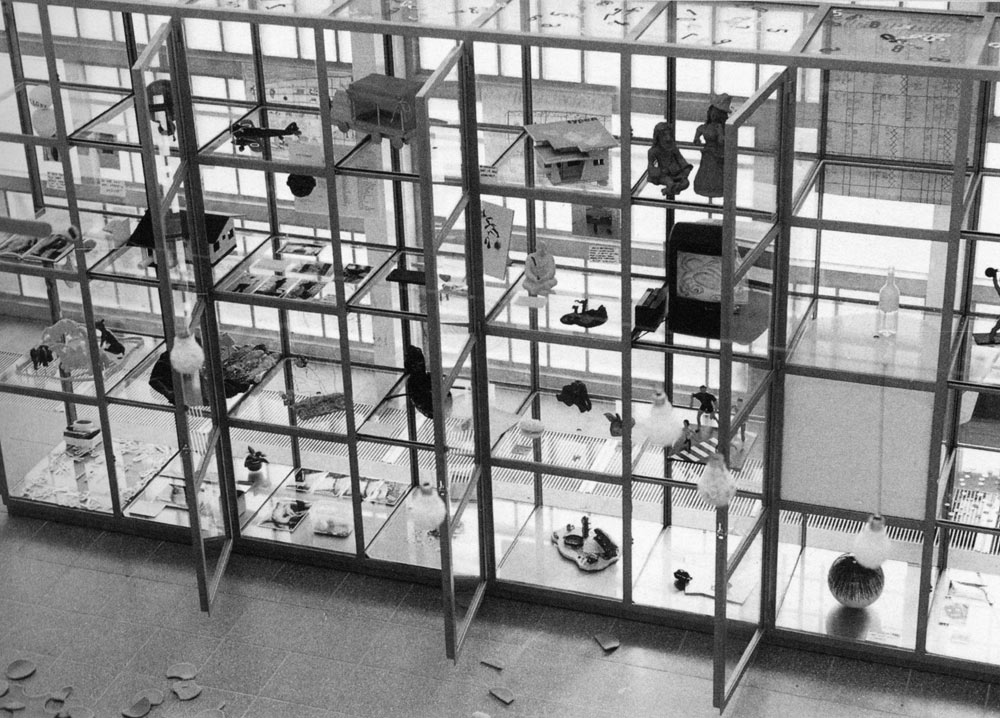
This text offers a sensitive, resolutely non-documentary and non-exhaustive tour of the ‘Toucher l’insensé’ exhibition at the Palais de Tokyo, as an opportunity and an attempt to think together about the many recent artistic and ‘exhibitional’ experiments being carried out around institutional psychiatry. As we move into the heart of this exhibition, we will see other forms and thoughts emerging here and there, surrounding the works on display like so many fragmented and ‘fragmenting’ spirits; spirits that we can sense and hear as we enter the exhibition.
Even before we enter, we are greeted by a whisper, a noise that tries to get inside our skulls, under our skin. It’s more like a rustle, invaded by a rumour coming from within – bursts of voices, echoes coming from the bodies trapped between the walls. Isolated, the rustle sounds like a foot breaking on dry leaves, or the sound of a wave washing up on the sand. In reality, it’s the sound of a hand palpating and trying to penetrate the protective envelope of a curled-up body. A scene that immediately places the threshold of the exhibition in correspondence with that other threshold of interiority: a moving, palpable, physical or symbolic frontier that separates and connects inside and outside – whether for an architecture or for a body.
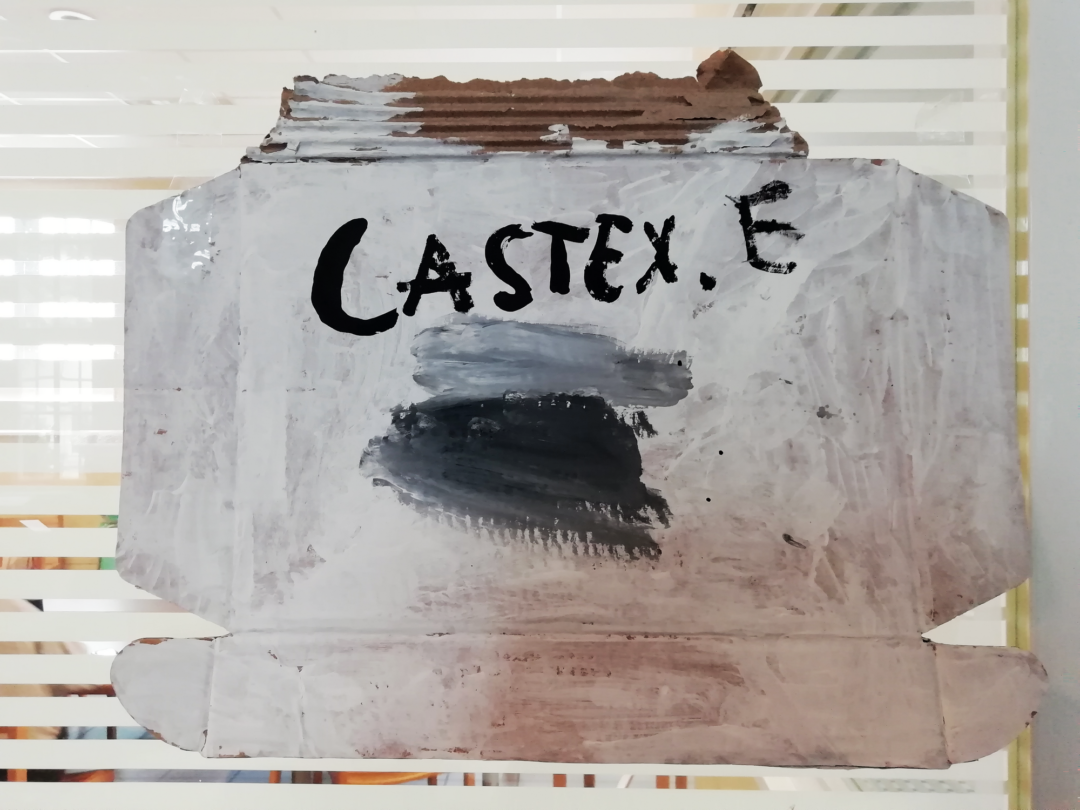
We stand in front of a screen animated by Signe Frederiksen’s series of drawings, Ni étrange ni étranger (2022). It is through these drawings that we enter the exhibition. These drawings are doubly significant, not only because they welcome us into the exhibition by illustrating a breakthrough into so-called ‘alienated’ minds, but also because they immediately raise the question of the status of the works on display.
In fact, Signe Frederiksen began this series of drawings without seeing it as part of his artistic practice – at the time focused on writing and directing. Instead, the artist saw it as a way of decompressing after her days working as an educational support assistant with children suffering from autistic, attention or behavioural disorders. A creative activity seen as an instrument for ‘emotional release’ ² and not as a professional artistic practice, this could be a variation on the ”art therapy’³ in vogue today. But then Signe Frederiksen decided to develop this production as a completely different aspect of his practice, by combining several techniques. Here we discover them in a set-up combining animation, wall drawings and drawings on paper, organised at the entrance and exit of the exhibition space like a tight mesh – a membrane woven from individual and collective forms of mental, social and sometimes physical alienation.
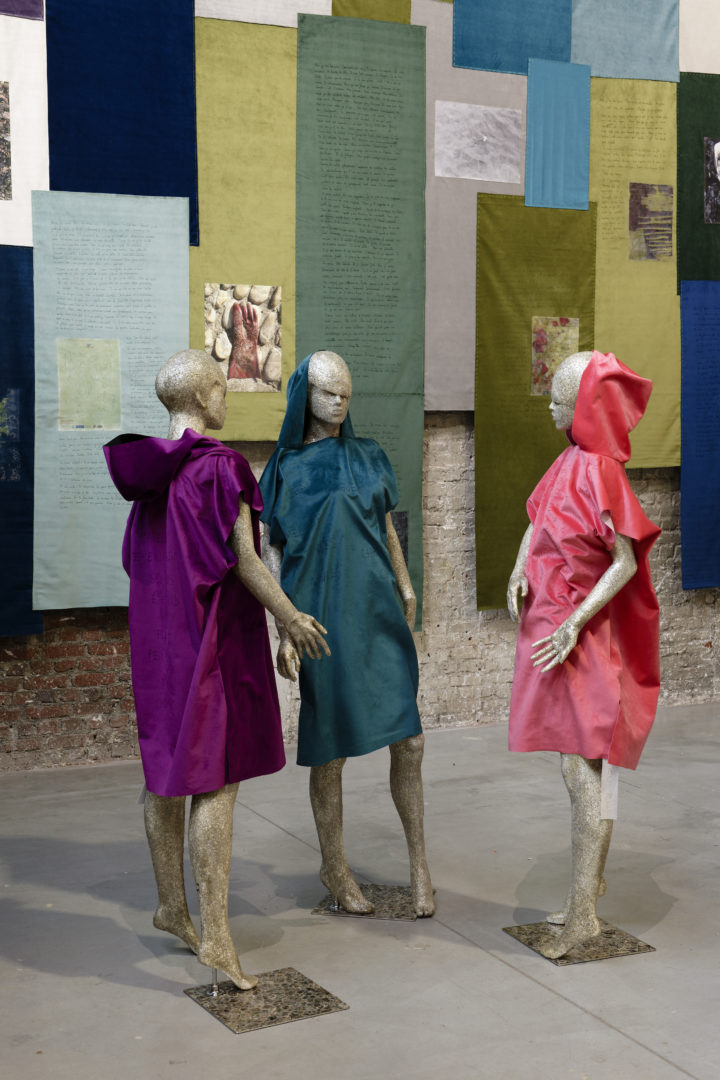
Let’s digress for a moment to emphasise the distinction between the productions of art and those of art therapy. The former are intended to be autonomous in an exhibition space; the latter are necessarily contextualised⁴. We could even extend this distinction by taking up the ‘paid/paid’ pairing that Jean Oury prefers to ‘cared for/treated’⁵ to designate the practices of institutional psychiatry: professional artistic production is remunerated; art therapy production is paid for, in the context of a one-off workshop or broader therapeutic care.
This also means that a professional artistic practice is not intended to base its essence on an unhappiness in need of expression, nor to rely on the illusion that artistic practice will save the artist’s mental health, or conversely that unhappiness will save artistic practice. This confusion perpetuates the culturally established fantasy of the artist caught up in the ‘medical alliance of genius and madness’⁶. In this respect, we are in line with the warning issued by the SMAC collective⁷, particularly to students at art schools, who are sometimes advised to ‘draw on their malaise to serve their art’, thereby risking confusion when it comes to assessing their artistic productions.
Now we cross the threshold of the exhibition at the Palais de Tokyo. You step forward, facing openwork walls and picture rails that allow you to see partly through them. Their arrangement forms an architecture around which we have to walk, passing through the exterior, while already guessing the interior. It is a reminder of François Tosquelles’⁸ first symbolic gesture when he arrived at Saint-Alban in 1940: to demolish the walls of the psychiatric hospital, to break down the frontier between the inside and outside of the asylum, to abolish the confinement and social isolation of patients, as a first step towards their recovery.
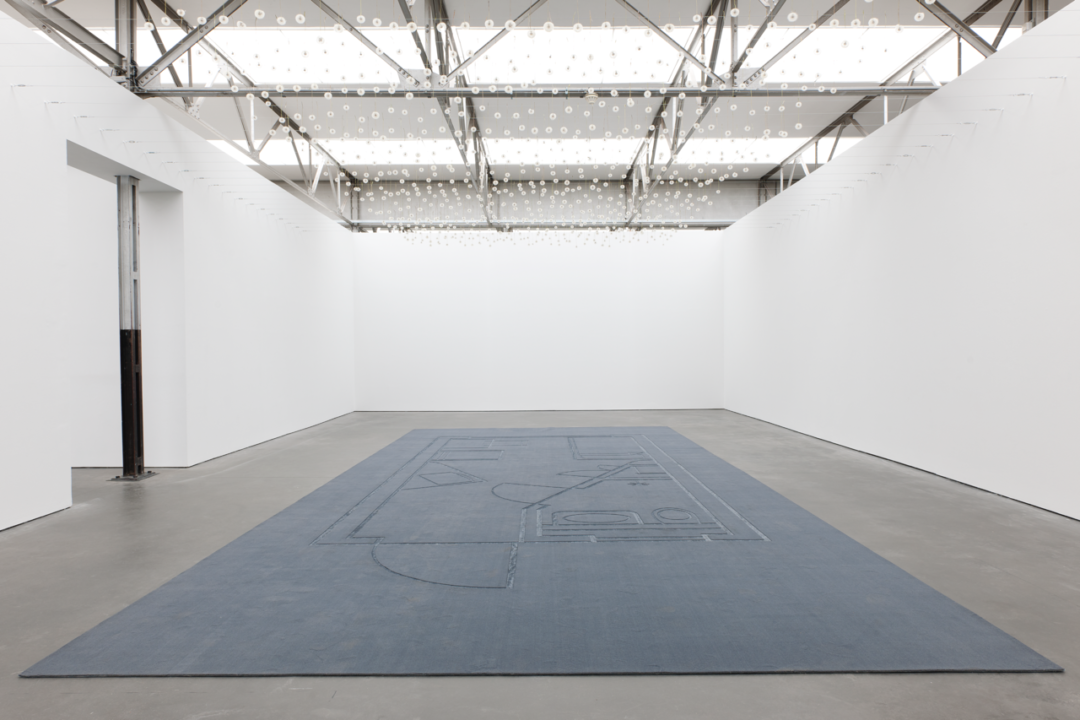
A scenography that also creates porosity between the spaces, beings and forms presented – the effect of a tacit association, in the sense of Tosquelles‘ “deconniatrie” (’Déconne, déconne, mon petit! ça s’appelle associer‘⁹). This is how Dora García’s mural (Mad Marginal Charts, 2024), which resembles a vast mental map, works with word clouds, a constellation of annotations surrounding texts by Kafka, Basaglia, Joyce or Freud. It’s a polyphonic, multi-referential gesture of writing and drawing, extended by his 2013 film Désordre (autour des crimes et des rêves), in which the faces and fragmented speeches of ‘carers/carers’ follow one another, as well as those of visitors to the contemporary arts centre 3 bis f, set up in the heart of the Montperrin psychiatric hospital in Aix-en-Provence. The 3 bis f project is based on the idea of breaking down the walls around patients to ‘create a link between art, psychiatry and the community’¹⁰. This project is ‘non-therapeutic a priori’ for the patients, and aims above all to generate an experience of otherness, a sharing of sensory experience through contact with the work of the artists in residence.
Returning to the ‘Touché l’insensé’ exhibition, we continue along the wall occupied by Dora García’s diagrams and drawings. We pass a series of floating ‘white objects’ (Patrik Pion, 2001-2022), imperfect and augmented memories of everyday objects that seem to have come back to haunt us. At the end of this strange corridor that we are crossing, we have to sit down, break the free movement of our steps around the structure. There is only one place on the bench facing the screen. We stop there, try to settle our gaze but are unable to fix it on the objects shown. Everything on the screen is a change of rhythm, a rupture, a break in the sound, a doubling. We can make out cycle wheels whose lines are superimposed on the spokes of the neighbouring mental map.
This video was produced following non-therapeutic workshops run by artists Paule Combey and Patrik Pion with patients from the George-Sand psychiatric hospital (Generativ Process) to express perceptual disorders. Here, she stutters the momentum of the visit, breaking it up. Then everything accelerates.
You find yourself following a sequence of disordered numbers and tablets, among which a white rabbit was undoubtedly running. Then you arrive in a reconstructed chamber-cell. You can’t see it straight away: it’s made up of a carpet strewn with footprints that blur the lines of the walls and objects. The whole set-up is a staging designed by Michel François (L’expérience du TBS, 1997-2024), based on everyday objects and stories collected from ‘patient-detainees’ in Kijvelanden (Netherlands). We come across plants, images and objects exchanged with them in a bartering logic that we know to be at the heart of the ‘social therapy’ developed by institutional psychiatry: an approach designed to support the integration of psychiatric patients into the social, cultural and even commercial exchanges of everyday life. In this sense, it is the act of bartering that can be described as a ‘collective’ act. The artist’s intervention may have been a cog in a ‘social-therapeutic’ establishment project for patient-detainees. As for the acts of creating and setting up these objects to produce a sensitive experience for visitors to the exhibition, it would be a shortcut to describe them as ‘collective artistic practices’, in an attempt to encompass the entire exhibition under this heading.¹¹ On the contrary, we would argue that the sensitive experience we have of this work is one of bewilderment. Alienating, altering: this device makes us feel in our flesh a disturbance that is not our own. It’s not about illustrating or pathologising, it’s about moving.
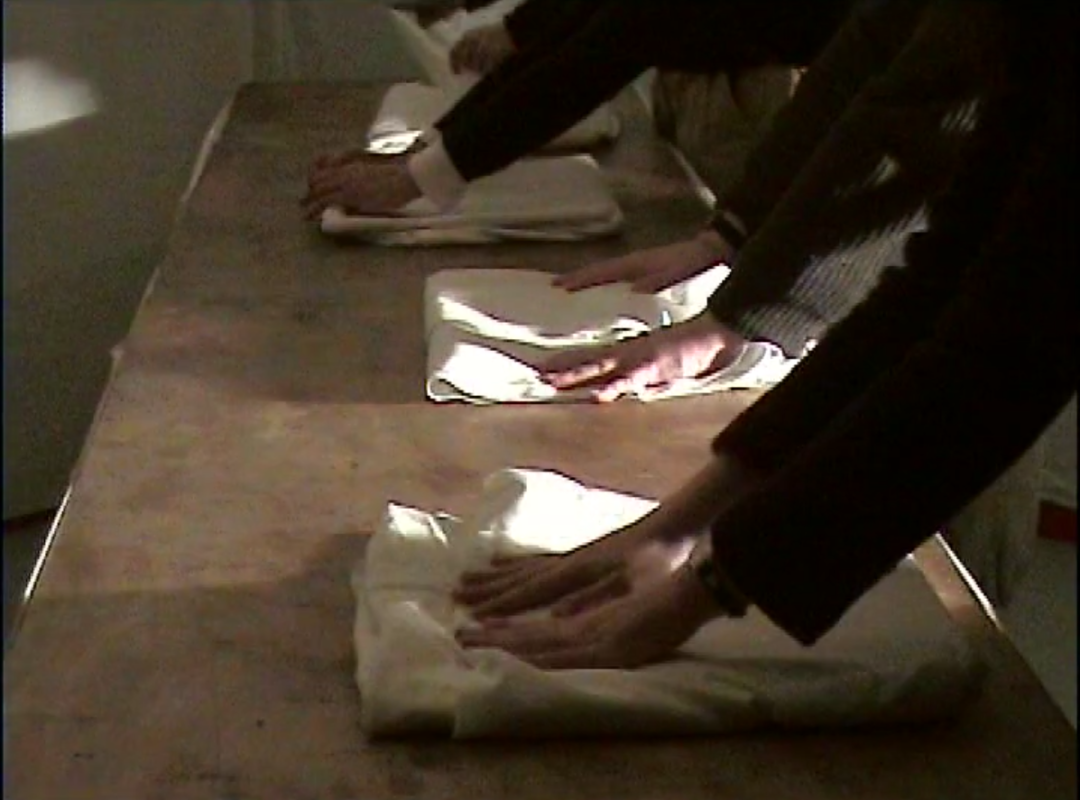
There are other installations on the subject of perceptual disorders – Yayoi Kusama’s immersive installation, Dots obsession (1998), presented in the exhibition ‘La Déconniatrie’ at Les Abattoirs comes to mind – and so does the general scenography of this exhibition, which leads us astray in its twists and turns, as we continue to advance through the labyrinth of its porous walls and its infinite time, stretched to the limit by the archives to be consulted and the films to be viewed. You can really spend hours listening to the voices of François Tosquelles and Jean Oury, seeing the clinics of yesterday and the many experiments of today.
Immersive works, scenographies, successions of archives, all have one thing in common: they move us, baffle us, augment us from the roots of our perception.
Now, if we return to the question of ‘how can we inherit the experience of institutional psychiatry in our contemporary artistic and exhibition practices?
It’s not a question of reproducing or appropriating content, but of shifting our tools, as Frantz Fanon’s experience at the Blida-Joinville psychiatric hospital in Algeria (1953-1956)¹² taught us – and made clear by the installation by Abdeslam Ziou Ziou and Sofiane Byari. Hence the plan to extend this exhibition beyond a scenographic tour, not by making institutional psychiatry the subject of the exhibition, but by making the exhibition and the institution that surrounds it subjects, in the psychoanalytic sense.
We walk towards the exit. On the wall, a final drawing by Signe Frederiksen accompanies us. Compared to those we saw at the entrance, this one depicts a distended body, decidedly enlarged.
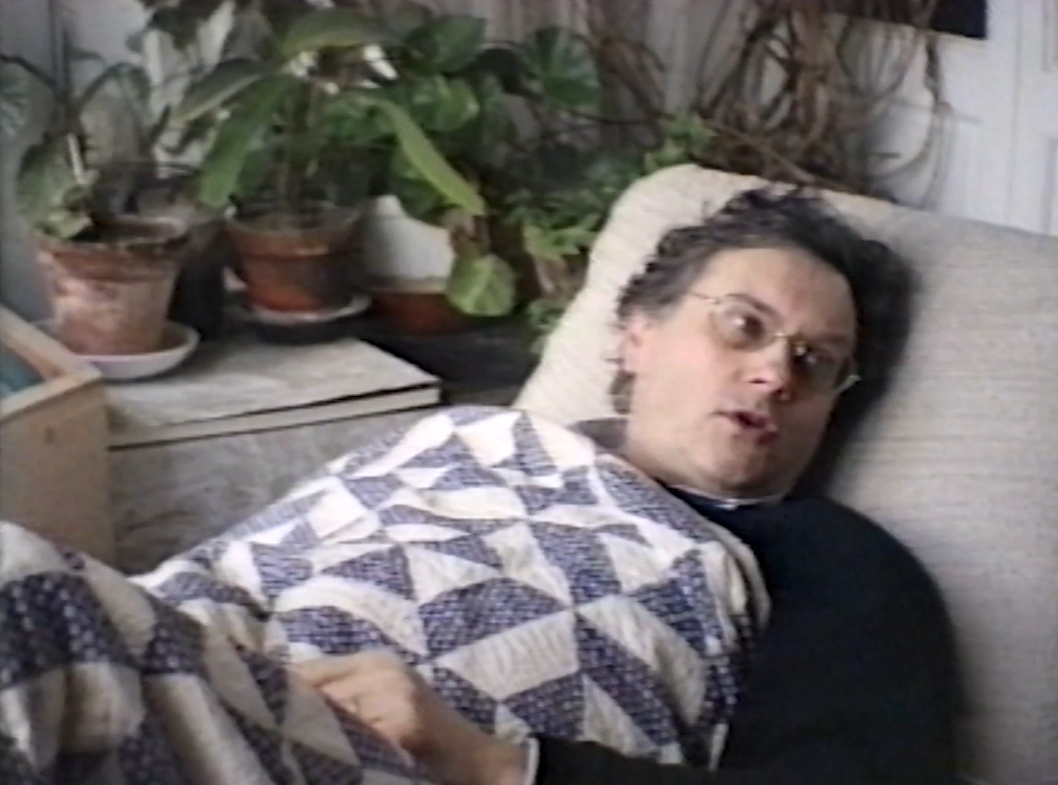
- ‘L’héritage oublié de François Tosquelles (1912-1994)’, with the support of the Mir-Puig Foundation, the University of Barcelona and the Antoni Tàpies Foundation, under the direction of Joana Masó and Carles Guerra, in association with museum institutions (Les Abattoirs, Musée – Frac Occitanie Toulouse, the Centre de Cultura Contemporánia de Barcelona, the Reina Sofía Museum in Madrid and the American Folk Art Museum in New York).
- Press kit for the ‘Touching l’insensé’ exhibition.
- Understood as a creative practice with a curatorial or therapeutic vocation, not to be confused with the arrival of ‘museum therapy’, which concerns the reception of works of art.
- Carles Guerra and Joana Masó (eds.), La Déconniatrie. Art, exil et psychiatrie autour de François Tosquelles, Toulouse, Les Abattoirs, 2024, which discusses a form of appropriation of the cultural productions of Saint-Alban patients by the art brut movement.
- Christophe Chaperot, Viorica Celacu, ‘Psychothérapie institutionnelle à l’hôpital général : négativité et continuité’, L’information psychiatrique, vol. LXXXIV,no 5, May 2008.
- Julie Cheminaud, Les évadés de la médecine. Physiologie de l’art dans la France de la seconde moitié du xixe siècle, Paris, Vrin, 2018.
- Collectif SMAC, ‘Qui prend-soin de la santé mentale des artistes?’, P L S,no 37, 2024.
- Catalan psychiatrist (1912-1994), Marxist activist exiled in France. One of the founders of institutional psychiatry.
- ‘Psychiatry is characterised by the need to invent. The individual remembers nothing. They are allowed to mess around. We say to them, ‘Go on, go on, my boy! No one judges you here, you can screw around to your heart’s content. I call psychiatry deconniatry’. Quote from François Tosquelles, in Carles Guerra and Joana Masó, op. cit.
- Jasmine Lebert, ‘L’expérience du 3 bis f : le soin par l’art, l’art par le soin – des zones arrière artistiques et citoyennes?’, P L S,no 37, 2024.
- The same can be said of the creative process for Carla Adra’s Paroles chaudes (2022), based on a traumatic narrative, which is the subject of a formatting process (fabric, video, sound) following a period of discussion with groups of patients and administrative staff. These two analyses should be distinguished from other contemporary productions on display in the exhibition, which are the result of workshops and presented in a documentary context. These include the ‘relational’ workshops with ‘no artistic or cultural intention’ by Boris Lehman & the Club Antonin Artaud; the Astéréotypie group filmed by Laetitia Møller; the film by Jules Lagrange produced with pupils from ULIS classes; the magazine Accroc and its photographs by Agathe Boulanger and young people from CIAPA in Paris.
- Jean Khalfa, ‘Décoloniser la folie’, in La Déconniatrie. Art, exile and psychiatry around François Tosquelles, op. cit.
Related articles
Some white on the map
by Guillaume Gesvret
An exploration of Cnap’s recent acquisitions
by Vanessa Morisset
Curator’s marathon : Frac Sud, Mucem, Mac Marseille
by Patrice Joly
